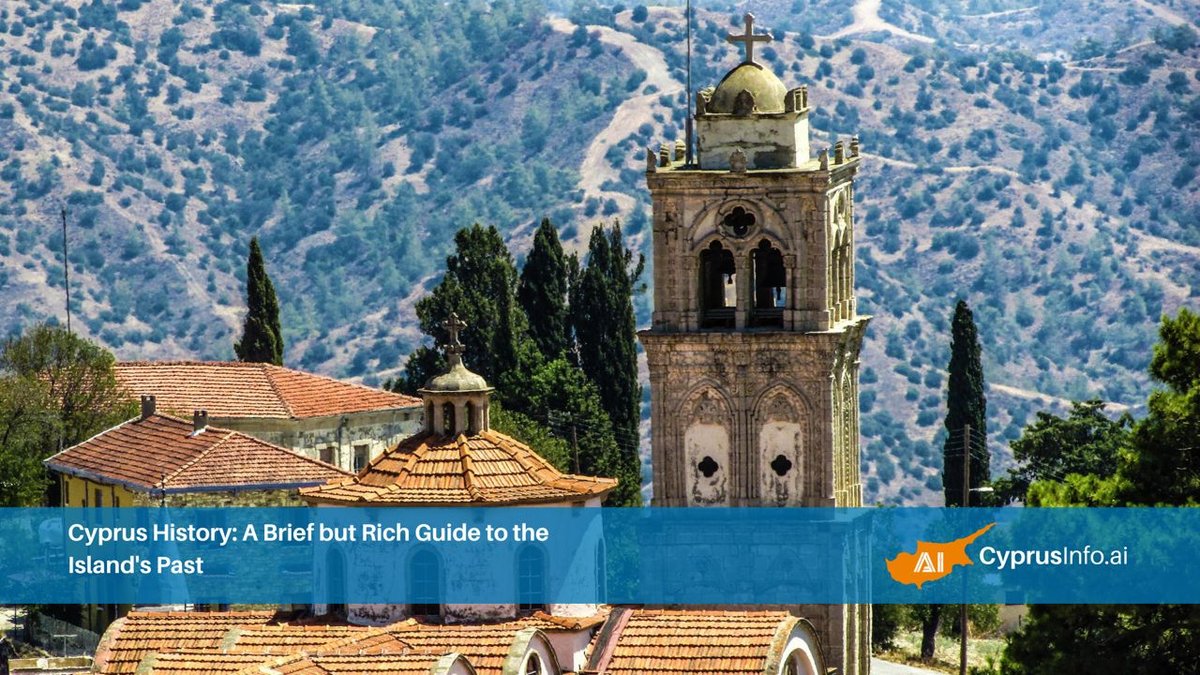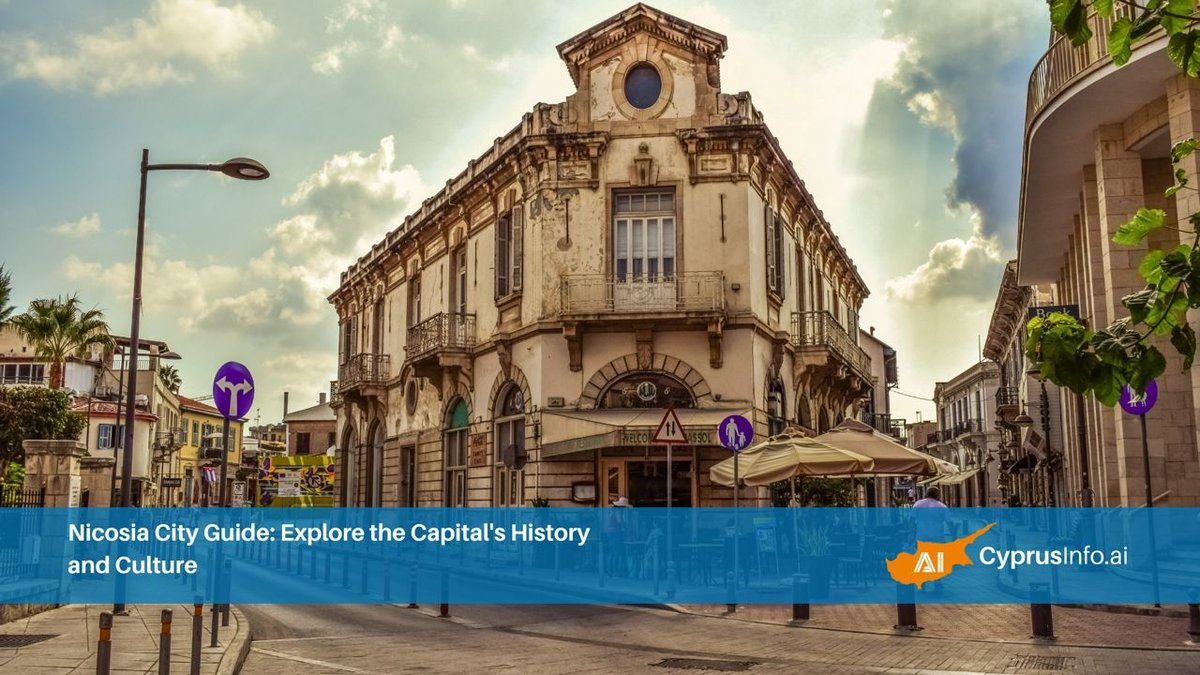Cyprus History: A Brief but Rich Guide to the Island's Past
The history of Cyprus is a captivating narrative that spans millennia, shaped by its strategic location at the crossroads of Europe, Asia, and Africa. From its earliest human settlements to its complex modern era, the island has been a melting pot of cultures, empires, and civilizations. This guide provides a brief but rich overview of the key periods that have defined Cyprus's past, leaving behind a wealth of archaeological and cultural treasures that you can still explore today. For more on the sites mentioned here, you can read our guide on Ancient Ruins in Cyprus. You can also get more help and information on our FAQ and Guides pages, which contain everything you need to know about the island.
The Prehistoric and Ancient Eras (10,000 BC - 330 AD)
The first signs of human life on the island date back to the **Neolithic period**, with the well-preserved settlement of Choirokoitia being a prime example. The island's rich copper resources, from which its name is derived, made it a central player in the **Bronze Age**. This era saw the rise of the Mycenaean Greeks, who brought their culture and language, laying the foundation for modern Cypriot identity. Later, the island was influenced by the Assyrians, Egyptians, and Persians. The **Hellenistic period** saw Cyprus become an important part of the Ptolemaic Kingdom, and under the **Roman Empire**, it prospered as a key province. The magnificent mosaics in Paphos are a testament to this era's wealth and artistry. This period of Roman rule was a golden age for the island, with new cities, roads, and aqueducts being built. Christianity was also introduced to the island during this period by Apostles Paul and Barnabas.
The Byzantine Era (330 - 1191 AD)
Following the decline of Rome, Cyprus became part of the **Byzantine Empire**, and Christianity took root deeply. The island was a crucial outpost of the empire, but it was often attacked by Arab raiders. Despite these challenges, the Byzantine era was a time of religious and cultural flourishing, with the construction of numerous monasteries and churches, many of which are still standing today. The art and architecture of this period, particularly the stunning frescoes in the Byzantine churches of the Troodos Mountains, are a testament to the island's rich Christian heritage. The influence of this period can still be seen in the traditional village life and the local culture of the island.
The Medieval and Frankish Periods (1191 - 1571)
In 1191, during the Third Crusade, **King Richard the Lionheart** of England conquered Cyprus and sold it to the Knights Templar, who in turn sold it to Guy of Lusignan. The **Lusignan dynasty** ruled Cyprus for almost 300 years, during which time magnificent Gothic cathedrals and castles were built. The island was a feudal kingdom, with a Latin elite ruling over the Greek Orthodox population. This period saw the construction of iconic landmarks like Kolossi Castle and the cathedrals of Nicosia and Famagusta. The Lusignan rule was followed by the **Venetian period**, which lasted from 1489 to 1571. The Venetians fortified the major cities, building impressive walls and defenses that are still visible today. For more information, you can explore our directory of all businesses and construction and real estate, which have helped build the modern version of the island.
The Ottoman and British Periods (1571 - 1960)
The island was later conquered by the **Ottoman Empire** in 1571, ushering in a new era of rule that lasted for over 300 years. This period saw the arrival of Turkish settlers and the establishment of a large Muslim community, creating the dual cultural identity that exists today. In 1878, the Ottoman Empire ceded Cyprus to **Great Britain**. Under British rule, the island's infrastructure was modernized, and its legal system was reformed. However, this period also saw the rise of Greek and Turkish nationalism, with the Greek Cypriots seeking union with Greece (Enosis) and the Turkish Cypriots advocating for partition (Taksim). This political tension laid the groundwork for future conflicts. For more on modern-day life, our guide on Cyprus for Expats provides a good overview.
The Modern Era and the Division of the Island (1960 - Present)
After a period of armed struggle by the EOKA movement, Cyprus gained its **independence in 1960**, becoming a republic with a power-sharing constitution between the Greek Cypriot and Turkish Cypriot communities. This complex arrangement, however, proved difficult to maintain. The post-independence period was marked by inter-communal violence, which culminated in the **1974 Turkish invasion**. The invasion led to the de facto partition of the island, with the northern part coming under Turkish control. The United Nations maintains a buffer zone (the "Green Line") that separates the two communities. Today, the Republic of Cyprus (Greek Cypriot south) is a member of the European Union, while the northern part remains an un-recognized state. Despite the political division, both parts of the island share a common history and culture, and efforts to reunify the island continue. The island's strategic location still makes it a key hub for many businesses and corporations. Our directory of Professional Corporate Services can give you an idea of the modern business environment. You can also explore our guide to exploring the Akamas Peninsula for more outdoor ideas and find some career opportunities on our website.
Frequently Asked Questions (FAQ)
1. What is the most famous historical site in Cyprus?
The most famous historical site in Cyprus is the Paphos Archaeological Park, a UNESCO World Heritage Site. It is renowned for its magnificent Roman mosaics that are incredibly well-preserved and depict scenes from Greek mythology. The site also includes a number of other ruins, such as a Roman odeon and an agora.
2. What role did copper play in Cyprus's history?
Copper played a vital role in Cyprus's history, particularly during the Bronze Age. The island's name is believed to be derived from the Latin word for copper, "cuprum." Its abundant copper resources made it a major hub for trade and a source of wealth and power in the ancient world. You can find out more about this in our guide to ancient ruins in Cyprus.
3. What is the "Green Line"?
The "Green Line" is a United Nations buffer zone that separates the Greek Cypriot south from the Turkish Cypriot north. It was established after the 1974 Turkish invasion and runs for 180 kilometers across the island. The line is patrolled by UN peacekeepers and serves as the de facto border of the island.
4. What is the significance of the Lusignan dynasty?
The Lusignan dynasty ruled Cyprus for almost 300 years, from the 12th to the 15th century. This period saw the construction of some of the island's most iconic medieval buildings, such as Kolossi Castle and the Gothic cathedrals in Nicosia and Famagusta. It was a time of significant cultural and architectural development on the island. You can also find more information on local businesses in our directory of all businesses on the island.
5. When did Cyprus gain its independence?
Cyprus gained its independence from Great Britain in 1960, becoming a republic with a power-sharing constitution between the Greek Cypriot and Turkish Cypriot communities. This was a result of a period of armed struggle by the EOKA movement against British rule.
6. What is the difference between Greek Cypriots and Turkish Cypriots?
Greek Cypriots are the ethnic Greek population of Cyprus who are predominantly Greek Orthodox. Turkish Cypriots are the ethnic Turkish population who are predominantly Muslim. The two communities have co-existed on the island for centuries, but their relationship has been strained by political tensions and the 1974 invasion. You can read more about the island's culture and lifestyle in our blog.
7. How can I learn more about Cyprus's history?
The best way to learn more about Cyprus's history is by visiting its archaeological sites, museums, and historical landmarks. You can also read books on the subject and take tours from knowledgeable local guides. Our guide on Cyprus Festivals can also give you an idea of the local traditions and culture.
8. What is the story of King Richard the Lionheart and Cyprus?
In 1191, during the Third Crusade, King Richard the Lionheart's fleet was shipwrecked near Limassol. He conquered the island from its ruler, Isaac Komnenos, and later sold it to the Knights Templar. This was a crucial event that led to the establishment of the Frankish feudal kingdom on the island. You can also explore the local economy and its history in our business categories directory.
9. How did the Ottoman rule change Cyprus?
The Ottoman rule brought significant changes to Cyprus. It saw the arrival of Turkish settlers, the establishment of a large Muslim community, and the conversion of many churches into mosques. The Ottomans also introduced a new legal and administrative system that had a lasting impact on the island. For more on modern professional services that help with setting up a company on the island, you can find a suitable firm in our Professional Corporate Services directory.
10. Can you still see evidence of all these different periods today?
Yes, the history of Cyprus is visible everywhere you go. From Neolithic settlements to Roman mosaics, Byzantine churches, and medieval castles, the island's past is a living part of its present. Exploring these sites is a fascinating journey through time and a great way to understand the island's rich and layered heritage. Our guide on exploring the Akamas Peninsula offers ideas on outdoor activities that you can do while exploring the island's historical sites.



